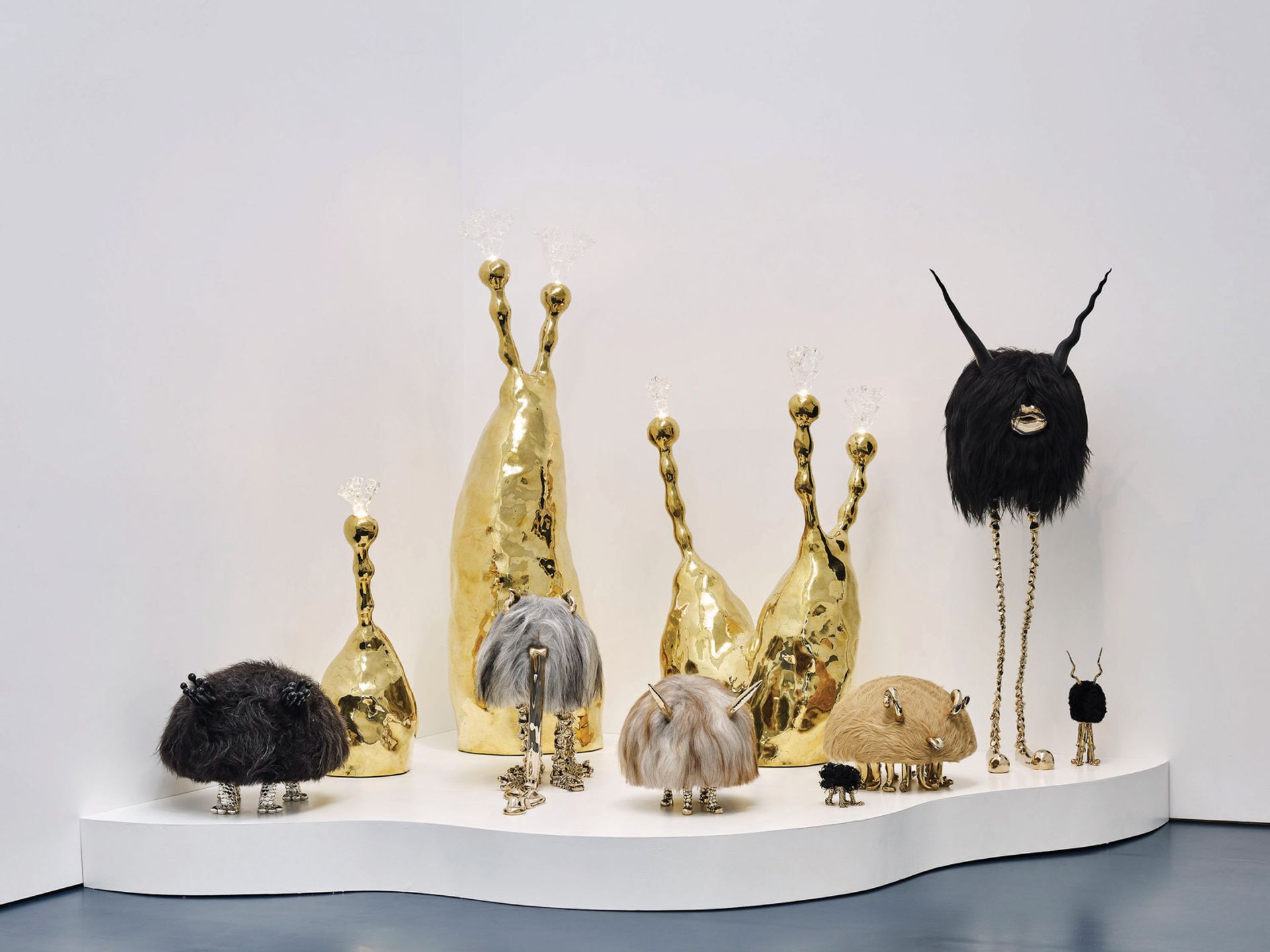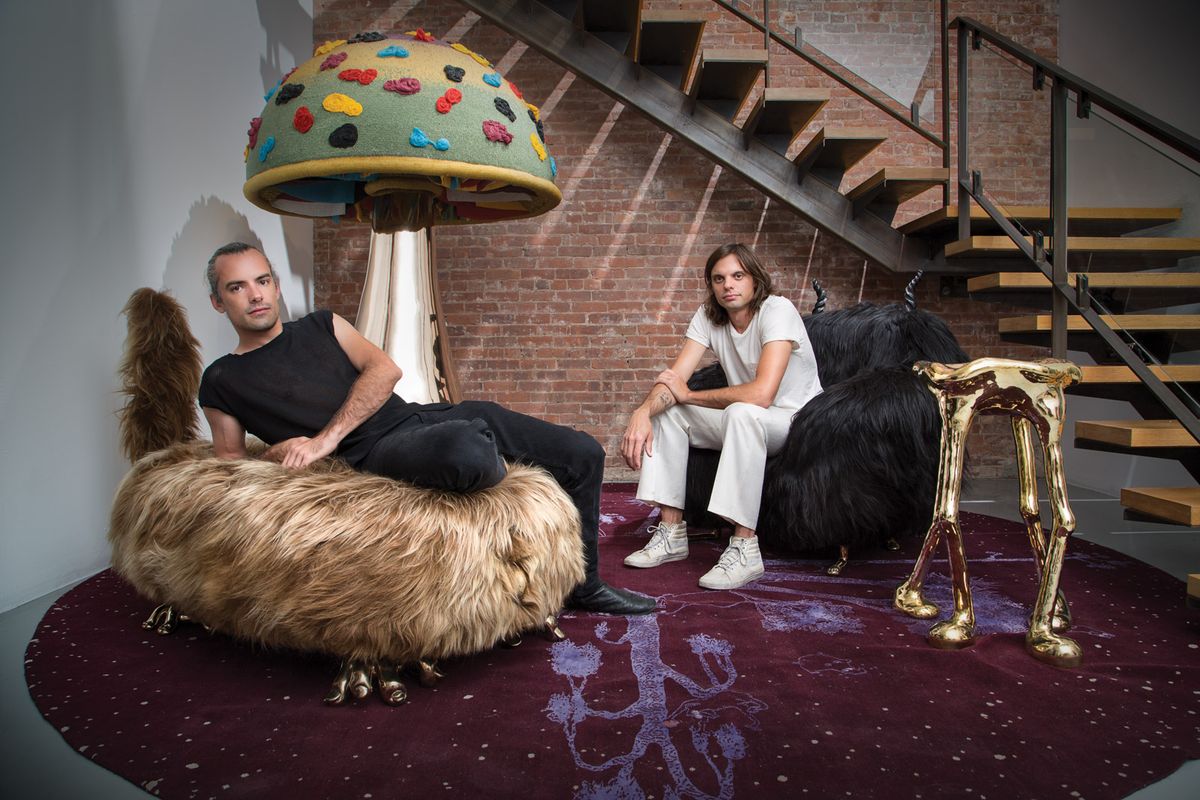What is the difference between showing with a design gallery and an art gallery? Is it better to be represented by one over the other?
Nikolai: If you make functional work, a design gallery, if it is conceptual, an art gallery. We make both and everything in between, so we have both.
Simon: This is very tricky, but it boils down to the relationship you have with the specific gallerists. Gallerists can either be car-salesmany middle men or incredibly supportive and thought provoking business partners. Go with a gallerist who values you as a person and, above everything, who you trust. If a gallerist doesn’t listen to the artist they represent, they are not the right gallerist.
How do you establish value for your work?
Nikolai: Our galleries do that for us, luckily. The value I usually hold in our own art is emotional. Not monetary.
Simon: Value is based on many things. We value our work based first on keeping a liveable wage for ourselves and our team of ten, plus the overhead of our studio, and then after that price can increase based on demand and how the market works. The bottom line is that you should not sell lower than what will make you feel good about releasing something so personal to you. You should sell at a price that keeps you, and anyone who helps you, able to make work living comfortably, and you should not inflate your prices beyond what the market feels is acceptable. Do not be a doormat, but definitely do not be greedy.
How can I think critically about my work without being too negative and sabotaging myself? Can I be my own best worst enemy?
Simon: That is a hard line to navigate. Just remember that you can make the choice between letting your inner voice be a saboteur or a constructive helper. Go with your gut more than with your head—the ego is a dangerous thing and can make you fear putting yourself out there, even when your work makes you feel something. Putting out work requires you to be vulnerable, so you have to remember your own worth regardless of how people respond to it. Work is about the feeling it gives its maker, so it cannot be wrong. Let the critic come in when it is helpful, but not otherwise. [The drag queen and actor] RuPaul says that he tells his inner critic: “You can look, but don’t stare.” I think that is great advice.
Nikolai: Show it to people you love and even those you do not. Take what they say to heart if they give it to you in earnest. Art is a form of communication; I want to make things that speak to a lot of people. So understanding your audience is very important. Again, just be yourself.

Works by the Haas Brothers Courtesy of the artists, R & Company, New York and Marianne Boesky Gallery, New York and Aspen. © The Haas Brothers. Photo credit: Tony Prikryl.
Who would win in a fight, you or the Campana Brothers?
Nikolai: If they wanted to fight, they would win. I have been in enough hockey fights to never do that again. I think we would be pretty passive.
Simon: I really do not like fights. I hope we would instead agree to work on a piece together. I admire those guys; it would be a cool piece.
How do you approach a gallery when you are a “nobody” in the art world?
Nikolai: Just be yourself. Make a lot of work. If you think it is good, someone will appreciate it, and if the gallery you are meeting does not, then they are not right for you.
Simon: Just remember that you are a somebody and come prepared with a lot of work and passion. Confidence and excitement make others feel confident in you and excited by you.
As twins, you have been collaborators for… ever. What is the key to successful creative collaboration?
Nikolai: You want to be certain that you care about your personal relationship more than you care about the business you have created. This leads to open hearts and minds and good, fluid communication.
Simon: We are lucky to have this built into our twin relationship, but trust and humility are essential. We are able to recognise when the other will be better at something and not micromanage. We both get excited to see what the other will come up with and want to be there to support one another. We are brothers before business partners, and I’ll never let a creative dispute get in the way of being a good brother.

Uma Worm-an (2018) Courtesy of the artists, R & Company, New York and Marianne Boesky Gallery, New York and Aspen. © The Haas Brothers. Photo credit Joe Kramm
I have artist’s block. How do I get the creative juices flowing again?
Nikolai: Go into nature, hang with friends, enjoy the ride. If your head is always buzzing, you’ll never get to rest.
Simon: When I feel blocked, I start making things. Sometimes I do something as simple as knitting, because it makes the critical part of my head turn off and then ideas start to flow. Or put yourself in a different setting. I love to go to the forest and just look at things. I focus on experiencing and feeling, instead of making a finished product. Don’t put the cart before the horse: let the feelings come and then start creating.
How did you get to be so stylish?
Nikolai: Thank you! I really like clothes and my wife Djuna is a stylist, so she introduces me to rad stuff.
Simon: I’m glad you think we are. I wear things that reflect my mood. I used to do a lot of drag. It made me fearless to wear whatever I wanted.
What is the best advice you’ve ever been given?
Nikolai: That success is happiness, not fame or fortune.
Simon: My friend Roman once said: “Don’t believe your own hype.” It turned me off when I heard it—which is proof that I needed to hear it. Humility is the most valuable intangible for anyone who gets some recognition. I have seen many people, including myself, forget why and how they arrived where they did, and that is a dangerous place to be.


